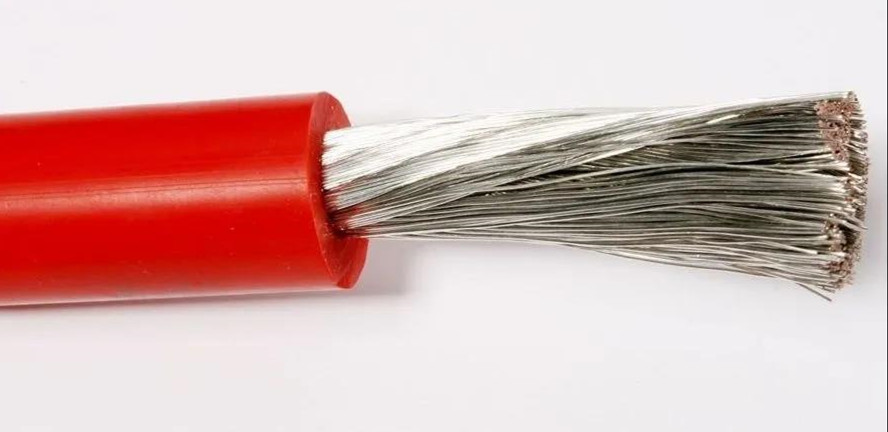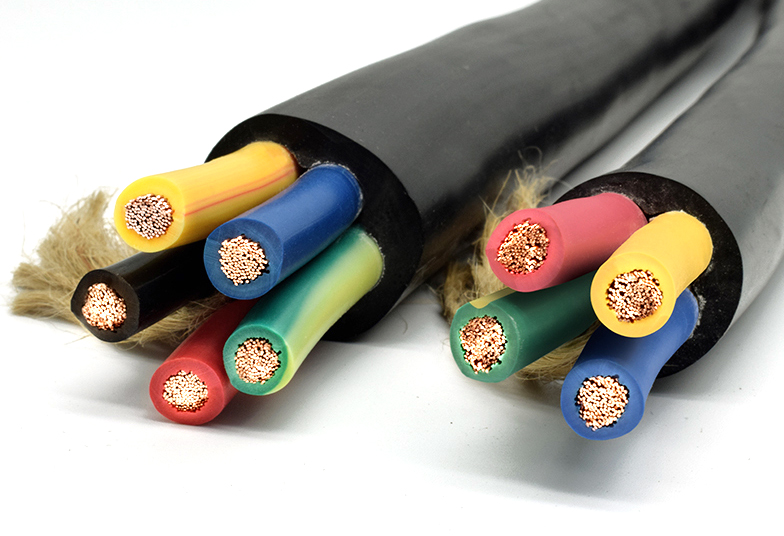Abstract
This paper presents the application of silicone rubber in the acsr cable industry, some problems and solutions in the production of silicone rubber cable.
Key words: silicone rubber, mixing, extrusion, coke burning, foaming, technology

1、 Preface
Because of its high heat resistance and excellent cold resistance, silicone rubber has a long-term temperature range of – 90-250 ℃, and has excellent electrical insulation and aging resistance. Therefore, the development of silicone rubber in cable industry is very rapid.
In the past few decades, the silicone rubber industry has been facing the challenge of meeting the growing demand of modern extrusion products market. The wear resistance, cutting and penetrating resistance, chemical resistance, oil resistance and mechanical strength of silicone rubber have been improved. As a material with high temperature of thermal aging, silicone rubber has been widely used in manufacturers and users because of its value and reliability. Nowadays, the application of silicone rubber in the wire and cable industry is developing continuously, mainly used as insulation and sheath of ship cable, aviation wire, motor lead wire, heating wire and many special purposes (such as atomic energy industry, aerospace industry, metallurgy industry, etc.).
In recent two years, the company has received orders from customers about silicone rubber insulation and sheath cables. However, because such products are not the leading products of the company, the processing technology and production equipment are not perfect. Although we have encountered many difficulties in the production process, after the joint efforts of the family, the products are delivered to the customers on time, We have learned a lot from it.
2、 Problems encountered in the production of silicone rubber cable
1. after mixing and adding sulfur, the rubber material is easy to burn and contains a lot of impurities during extrusion, which leads to breakdown of insulation voltage.
2. loose shell and blister phenomenon occur during the extrusion process of sheath.
3、 Solutions
1. technical requirements for mixing and returning
Although the processing equipment of silicone rubber is not different from that of organic rubber, it is better not to use the same open mill to process organic rubber and silicone rubber. It is better to have a special operation room for silica gel and keep the environment clean, because the mechanical and electrical properties of the polluted silicone rubber should be reduced. If special processing equipment and processing site cannot be configured for silicone rubber, it is necessary to pay attention to completely isolate the polluting materials from the coordination aids of silicone rubber and silicone rubber, because most of the impurities are from the mixing of rubber.
Because of the characteristics of silicone rubber, the plastic properties of the rubber material which need to be recycled will change after the re refining, and it is easy to pack it on the roller with fast speed. Cooling water should be put into the roller of the mixer to avoid burning of the rubber. Special attention should be paid to the use of the rubber containing bis 2.4-dichlorobenzoyl peroxide as the curing system. Because the decomposition temperature of bis 2.4-dichlorobenzoyl is about 45 ℃, the decomposition products 2.4-dichlorobenzoic acid and 2.4-dichlorobenzene are not volatile, and the rubber materials are easy to burn. In order to obtain high quality products, the following basic steps must be followed when mixing silicone rubber:
(1) . carefully weigh each kind of coordination components (such as flame retardant, vulcanizing agent, color masterbatch, etc.).
(2) . after putting the pure rubber or reinforcing rubber on the open mixer, adjust the roll distance to make the silicone rubber wrap on the roller with fast speed and fully return to the refining. Pure silicone rubber can be filled with only a little reflexion or no return refining. However, due to the silica in the reinforced silicone rubber, it must be fully refined. As long as the rubber is wrapped on the roller with high speed, the degree of re refining is appropriate.

(3) . if necessary, flame retardant, color master material, etc. shall be added to the adhesive. Some fillers fall into the receiving tray through the roller during mixing, and they should be collected and added to the rubber before the next filling is added. Rubber scraper is often used to scrape the filler from the receiving plate. It is better not to use brush, because some brush hairs may fall off the brush and mix them into the rubber. It is especially important to note that all fillers can not be added to the rubber at one time, but should be added in batches in 2-3 times. Every batch of filler is added, the rubber should be fully turned over. This can ensure the packing is evenly distributed and avoid the formation of hard packing clots. Reasonable roll distance can ensure the best mixing speed and quality of rubber.
(4) . finally, the vulcanizing agent is added to the rubber. Because the vulcanizing agent we currently use is 2.4-dichlorobenzoyl peroxide, when the rubber is too hot (no more than 4O ℃), no vulcanizing agent is added, otherwise, partial pre curing will occur, which will lead to the loss of the rubber or vulcanizer. Enough cooling water is put into the roller to avoid overheating of rubber. Finally, in order to make the vulcanizate disperse evenly, the whole roll of rubber material should be thin through several times.
2. correct use of filter screen and rubber filter pad
The filter screen is usually composed of 20-40 mesh filter plate and 60-100 mesh stainless steel filter with fine mesh. Some manufacturers do not like to extrude directly with the filter screen, because this can improve the extrusion speed and sometimes eliminate the possibility of heat generation and coke burning near the rubber filter plate. However, the use of the filter screen can not be ignored, because it plays a significant role in removing impurities and dispersed filler particles in the rubber. At the same time, the filter screen can also exclude the air in the rubber material during mixing and back mixing, especially for the softer rubber.
Because silicone rubber is only slightly thermoplastic and is not easy to be subjected to flow stress or shear strain in its unvulcanized state, the design of filter plate is not the key. Most filter plate designs are suitable for silicone rubber processing.
3. selection of extrusion equipment
In terms of equipment selection, we have no choice because we have no special silicon rubber cable production equipment at all. Among the three continuous vulcanization production equipments we currently use, the equipment that can be used for the production of silicone rubber is as follows: Φ 65/ Φ The 90 steam continuous vulcanization and extrusion machine and PLCV salt bath continuous vulcanization and extrusion machine.
4. process exploration and improvement
Because silicone cable is not our regular product, we always feel the stone across the river when we produce silicone cable. We used the insulation extrusion separately Φ 65/ Φ 90 steam continuous vulcanization and extrusion machine and PLCV continuous vulcanization extruder. But because Φ 65/ Φ The expansion pipe cannot be connected to the head of the 90 steam continuous rubber extruder, because the temperature of the head will rise rapidly after the expansion pipe is connected to the head under the steam heating, which leads to the vulcanization of silicone rubber in advance during extrusion. So in actual production, we do not connect expansion pipe to the head, but use steam in open mode, which will cause the steam pressure can not be applied too much, which affects the production speed and waste a lot of steam. When PLCV unit is in insulation extrusion, under the condition of controlling extrusion temperature, extrusion is not too big, only 0.2MPa pressure or no pressure is needed to meet the product requirements.
We are producing a number of single core cables with silicone rubber insulation and rubber sheath. Because the customers require that the insulation and sheath can be easily stripped, this means that the double layer co extrusion process we usually adopt in the production of single core cables can no longer be used. When the insulation extrusion is ready for the sheath extrusion, the problem arises: the silicone rubber insulation layer in the inner mold of the insulating wire core is easy to be driven up, which blocks the inner mold, and the bubble opening of the sheath after extrusion of the sheath. After repeated tests, we have adopted a layer of non-woven fabric in the insulation core to provide a storage space for the gas released by the silicone rubber insulation during secondary vulcanization. Under the condition of pipe pressure of 0.2-0.3mpa, the problem of being caught and blistering of sheath in the inner mold of insulation is solved.
In September, 2006, a customer customized a silicon rubber insulated silicone rubber sheath frequency conversion cable. Because the core of the insulating wire is formed, the copper tape is wrapped as the shielding layer. In order to prevent water from entering the sheath during the extrusion of the sheath, we first adopt the method of sealing the finished product head and then pressurizing, but the problems of sheath loose shell, blistering and explosion are also appeared. It is proved that we also use the method of wrapping a layer of non-woven cloth outside the shield layer of copper tape, and pressing when the head enters the vulcanizing tube 5m, which solves the problems of sheath loose shell, blistering and explosion.
In view of the success of the last few times, we blindly believe that non-woven fabric can solve the problems in the production of silicone rubber cable, but it is not all silicone rubber cables can produce qualified products by wrapping the non-woven fabric on the insulation. When the sheath is extruded after the multi-core cable is formed, although the non-woven cloth is wrapped, it is often because the cable is not filled enough, the melt pressure is not enough during the extrusion of the sheath, and the silicone rubber cannot be squeezed into the gap of insufficient filling, but the phenomenon of luller appears after the vulcanization tube is pressurized and vulcanized. Therefore, when the sheath is extruded after the multi-core cable is formed, we do not agree to add filling and wrapping non-woven cloth when the cable is formed, because the cable core has enough clearance to store the gas released by the silicone rubber insulation during secondary vulcanization. As long as the pipe pressure is applied properly, the loose shell and blister and the dew phenomenon of the sheath can be avoided completely.
4、 Concluding remarks
In conclusion, through the analysis of the problems encountered in the production process, we can not grasp the special points, and find out the causes of the problems fundamentally through the phenomenon and adopt practical technology and technical measures to solve the problems. We believe that through our efforts, the production process of silicone rubber cable will be mature, the quality of products will be improved, and the silicone rubber cable will gradually become our leading product, and the market competitiveness of rubber sheath cable will be enhanced.
